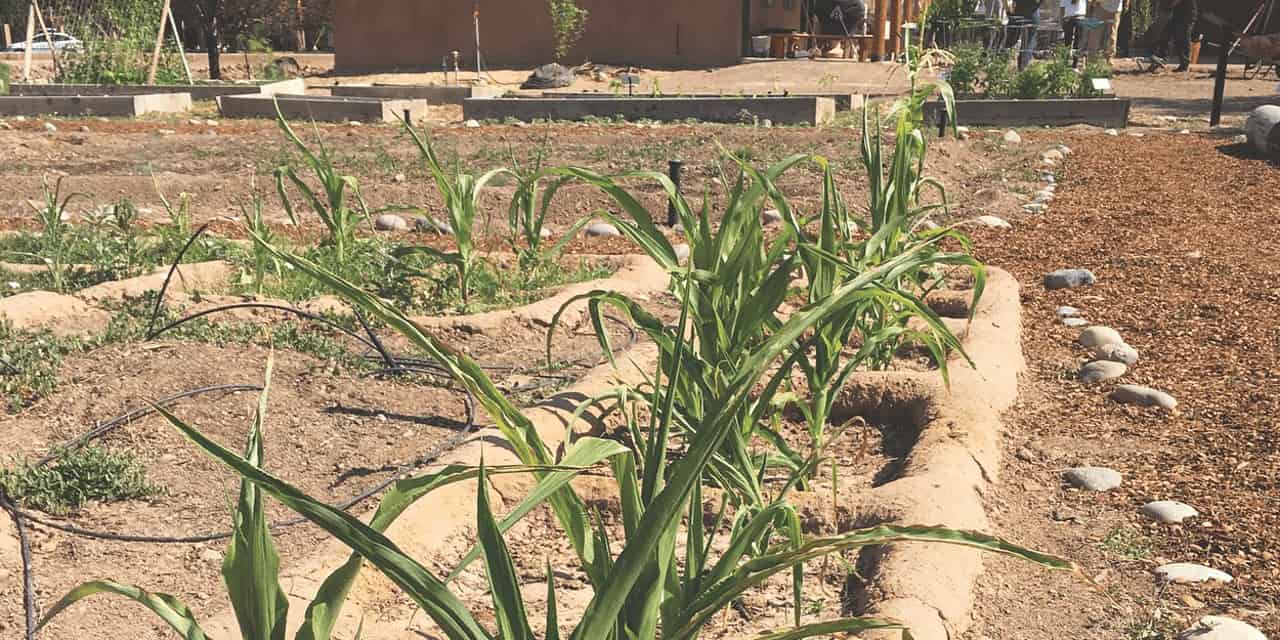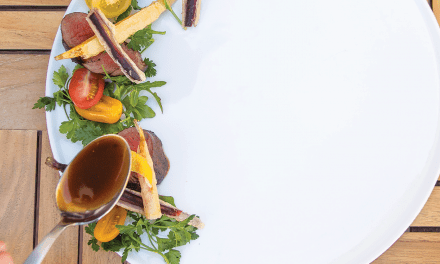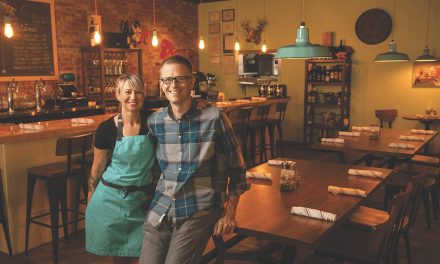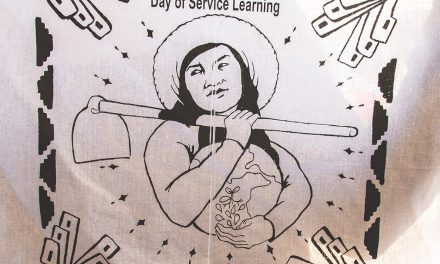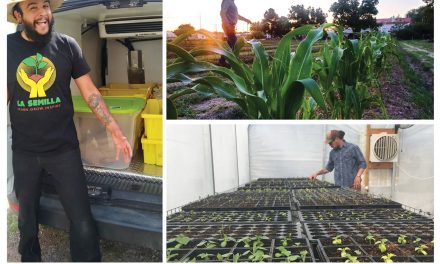Indian Pueblo Cultural Center’s Resilience Garden
By Mike Barthelemy

Left: Resilience Garden at the Indian Pueblo Cultural Center. Right: Bettina Sandoval. Photos courtesy of IPCC.
“Sheez, you Pueblos are kinda too darn much,” I joked with Bettina Sandoval as we looked out on the Indian Pueblo Cultural Center’s (IPCC) Resilience Garden. She laughed, and we continued to crack jokes for fifteen minutes before getting to the garden project. We are both Native, myself a member of the Three Affiliated Tribes in western North Dakota, the agricultural nations of the Upper-Missouri, and Sandoval is a member of Taos Pueblo, the northernmost Pueblo. Standing outside a now-dormant garden in February, we visited about the weather, our homes, and the importance of gardening to indigenous people with a strong agricultural tradition.
The continuation of farming techniques passed down through generations in the face of colonialism testifies to the resilience of New Mexico’s Native people. This patch of earth along Twelfth Street is more than a garden where Sandoval works the soil from spring to fall. It presents an opportunity to share knowledge of Pueblo farming techniques and history with Native and non-Native people in Albuquerque. This spring, the IPCC will once again begin offering their Seasons of Growth Learning Series, which aims to teach the public about a host of traditional gardening techniques, including the handling of Native heirloom seeds, principles of Pueblo agriculture, and composting, in an effort to jumpstart participants’ own gardens in the metro and surrounding lands.
The garden is organized into four separate sections and, in many ways, follows the trajectory of Pueblo history. The first is a foraging garden that represents the diversity of plant life that Pueblo people gathered annually in areas throughout New Mexico to supplement their gardens of planted produce. “Our land is home to diverse native plants, from rich riverbeds lined with cottonwoods to dry deserts speckled with cacti and mountainsides covered in juniper, piñon, and conifer trees,” a plaque explains. At the time of my visit, only evidence of cotton plants remained in the bed, and I teased Sandoval about how unimpressed I was by the lack of plants in February. “Yeah, I better get with it,” Sandoval fired back.

The second section is a “waffle” garden. This area is well named because the technique of raised earth around the plants gives the appearance of a waffle in the soil. “We hand-form their walls to catch previous rainfall, concentrate water around seeds, and keep soil damp during dry weeks.” This method is used to collect rainfall in particularly arid climates such as the southern and western Pueblos. Water is often scarce in many areas of New Mexico, and the Pueblo people continue to cherish this life-giving resource through ceremonies and dance. Water is an essential element and we cannot afford to waste it. Not only is this garden representative of historical methods of water collection, but it is also an example of the types of collaboration between the Pueblo people contributing to this garden project. Sandoval tells me that the garden is not only a teaching space but a learning space for those working at the cultural center, who also gain agricultural knowledge by visiting tribal members from different Pueblos.
As Ancestral Puebloans began to settle near water sources, they began to develop extensive irrigation systems, which are showcased in the Resilience Garden’s third section. It is designed to flood, and the varieties of plants grown there are adapted to this technique. Sandoval always grows chile and the three sisters of Native agriculture, corn, beans, and squash—with variations in the waffle and flood method—as well as a variety of other seasonal vegetables. “We decide at the beginning of the season what plants will go into the garden,” Sandoval says. These varieties are representative of the different Pueblos. The irrigation systems built by Ancestral Puebloans are still used by their descendants today, bridging the past and the present.
In the fourth section of the Resilience Garden, Sandoval explains how Pueblo farming adapted over time. The Spanish arrived in New Mexico in the 1500s, and with them they brought new plants and animal species. These foreign plants poured into the area and soon threatened to overtake the indigenous plant life. As a testament to the strength of the Pueblo people, they quickly adapted, cultivating many of these introduced plants and integrating them into their own diets. At the same time, they retained many of their historical agricultural traditions and connections with the land. This adoption of introduced plants and continual evolution of farming practices shows an adaptable and thriving Pueblo people.
The IPCC Resilience Garden’s 2018 Season’s of Growth Learning Series runs from March to October on the third Sunday of each month. For more information visit: www.indianpueublo.org
Edible celebrates New Mexico's food culture, season by season. We believe that knowing where our food comes from is a powerful thing. With our high-quality, aesthetically pleasing and informative publication, we inspire readers to support and celebrate the growers, producers, chefs, beverage and food artisans, and other food professionals in our community.

